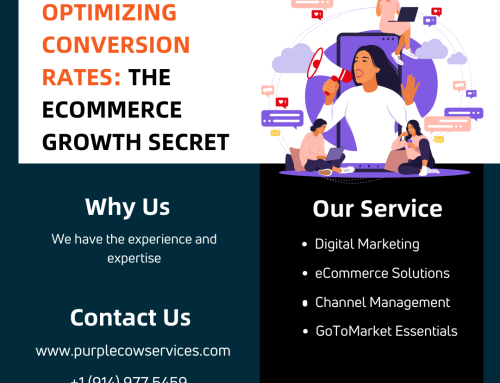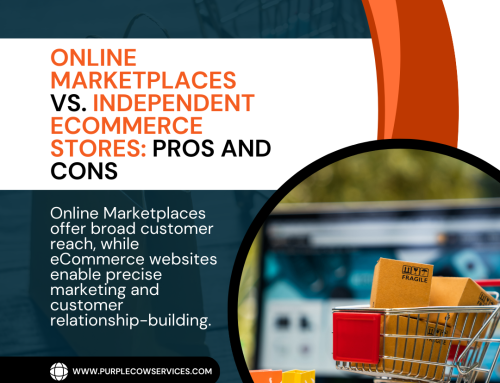In the fast-paced world of eCommerce, the pursuit of success hinges on staying ahead of the curve. With millions of online stores vying for consumers' attention, businesses can no longer afford to rely solely on the traditional one-dimensional approach.
Share This Story, Choose Your Platform!
It’s time to embrace the 360-degree approach, a holistic strategy that encompasses every facet of your eCommerce business. In this comprehensive guide, we’ll delve deeper into the why and how of adopting a 360-degree approach for your eCommerce venture.
Understanding the 360-Degree Approach
At its core, the 360-degree approach to eCommerce is a comprehensive strategy that leaves no aspect of your online business untouched. It extends beyond the confines of your website and encompasses every touchpoint and interaction your brand has with consumers across various channels. The objective? To provide customers with a seamless and consistent experience from their initial encounter with your brand to the final purchase, and beyond.
Key Components of a 360-Degree Approach
Multi-Channel Presence:
The concept of omnipresence in the digital realm. It entails being active on diverse online platforms, from your website and social media to major marketplaces like Amazon and eBay, and the development of mobile applications. This ensures that customers can engage with your brand on their preferred channels.
Data-Driven Insights:
The power of data analytics to decode customer behavior, preferences, and trends. A data-driven approach equips you with the tools needed to make informed decisions and craft marketing strategies tailored to your target audience.
Personalization:
The art of offering personalized experiences to customers based on their unique preferences and browsing histories. Personalization drives customer engagement and, in turn, conversion rates.
Omnichannel Strategy:
The integration of all channels to deliver a consistent brand experience. Customers should perceive your brand uniformly, whether they’re browsing your website, engaging with your mobile app, or visiting a physical store (if applicable).
Customer Support:
The provision of exceptional customer support across a variety of channels, encompassing chat, email, and phone services. Timely and effective assistance significantly enhances customer satisfaction.
Marketing and Advertising:
The creation of cohesive marketing campaigns spanning multiple platforms and channels. Consistency in messaging and branding enhances brand recognition and fosters trust among consumers.
Inventory Management:
Ensuring synchronization of inventory across all channels to prevent overselling or underselling of products. A well-managed inventory prevents customer disappointment and frustration.
Now, let’s delve deeper into the compelling reasons why adopting this approach is indispensable for your eCommerce business.
The Benefits of a 360-Degree Approach
Enhanced Customer Experience
In the eCommerce realm, the customer experience reigns supreme. A 360-degree approach ensures that your customers receive a consistent, user-friendly, and personalized experience across all touchpoints. This consistency builds trust and loyalty, encouraging customers to return for future purchases.
Consider a scenario where a customer encounters your products on social media, visits your website, initiates a live chat inquiry, and ultimately completes the purchase via their mobile app. With a 360-degree approach, this journey is seamless, significantly increasing the likelihood of conversion.
Improved Customer Retention
Customer retention is often more cost-effective than acquiring new customers. When you provide a top-notch experience across all channels, customers are more likely to return. Furthermore, a satisfied customer is likely to become an advocate, contributing to organic growth.
Data-Driven Decision Making
Data is the lifeblood of eCommerce. A 360-degree approach involves gathering data from diverse sources, enabling you to gain profound insights into customer behavior and preferences. Armed with this data, you can make informed decisions, optimize marketing strategies, and tailor your product offerings to meet market demands.
Competitive Advantage
In a fiercely competitive eCommerce environment, differentiation is the name of the game. A 360-degree approach sets you apart from competitors who may focus solely on a single channel or overlook the importance of data-driven strategies. By offering a superior customer experience and personalized interactions, you gain a compelling competitive edge.
Increased Sales and Conversions
A seamless shopping experience across all channels, coupled with personalized recommendations and marketing efforts, significantly boosts your chances of converting visitors into customers. When customers feel valued and understood, they are more inclined to make a purchase and return for future transactions.
Adaptability to Changing Trends
The eCommerce landscape is dynamic, with new trends and technologies emerging regularly. A 360-degree approach equips your business to adapt swiftly to these changes. Whether it’s integrating voice commerce, leveraging augmented reality for product visualization, or capitalizing on the latest social media platform, you’ll be well-prepared to stay ahead.
Brand Consistency and Recognition
Consistency is the bedrock of a strong brand. When customers encounter your brand consistently across various channels and experience the same messaging and quality of service, it reinforces brand recognition and trust. Over time, this can lead to brand loyalty and advocacy.
Implementing a 360-Degree Approach: A Detailed Roadmap
Now that you understand the profound importance of a 360-degree approach in transforming your eCommerce business, let’s embark on a journey to delve deeper into how to implement this strategy effectively.
Multi-Channel Strategy: Maximizing Your Presence
Identifying the most relevant channels for your business is the first step towards embracing the 360-degree approach. To achieve this, consider your target audience and their preferred avenues of engagement. Your multi-channel strategy could encompass:
Your Website: Your online storefront is the cornerstone of your eCommerce presence. Ensure that it offers a seamless and user-friendly experience, with intuitive navigation and responsive design.
Social Media Platforms: Social media has evolved into a powerful eCommerce tool. Identify the platforms where your target audience is most active and establish a strong presence. Engage with your followers through compelling content, regular updates, and interactive features.
Marketplaces: Expanding your reach by listing your products on major marketplaces like Amazon, eBay, or Etsy can be highly beneficial. Leverage these platforms to tap into their vast user bases and gain exposure to a broader audience.
Mobile Apps: In the age of smartphones, having a dedicated mobile app can provide a more convenient shopping experience for your customers. Ensure that your app is user-friendly and offers exclusive features or discounts to incentivize downloads.
Physical Stores (If Applicable): If your business extends to brick-and-mortar locations, ensure that the in-store experience aligns with your online brand. Customers should encounter a consistent identity whether they’re shopping online or in person.
The key to a successful multi-channel strategy is ensuring that each channel complements the others. Maintain a consistent brand identity and messaging across all platforms to create a unified customer experience.
Data Analytics: Decoding Customer Insights
Investing in robust analytics tools is paramount to the 360-degree approach. These tools allow you to collect and analyze data from all touchpoints, providing invaluable insights into customer behavior, preferences, and pain points. Here’s how to make the most of data analytics:
Comprehensive Data Collection: Collect data from every interaction with your customers, from website visits and social media engagements to purchases and customer support interactions.
Customer Segmentation: Use data to segment your customer base. By categorizing customers based on demographics, purchase history, or browsing behavior, you can tailor marketing efforts and personalized recommendations more effectively.
Behavioral Analysis: Dive deep into customer behavior patterns. Understand what products they frequently view, the pages they linger on, and the triggers that lead to conversions. This information can guide product recommendations and marketing strategies.
A/B Testing: Implement A/B tests to refine your website and marketing strategies. Analyze which versions perform better and continually optimize based on the results.
Feedback Loops: Encourage customer feedback and actively listen to their suggestions and complaints. This feedback is a goldmine for identifying pain points and areas for improvement.
Regularly review and refine your strategies based on data-driven findings. Continual analysis ensures that you remain agile and responsive to evolving customer needs.
Personalization: Tailoring Experiences for Each Customer
Leveraging advanced personalization tools and techniques is a cornerstone of the 360-degree approach. By offering tailored experiences, you can enhance customer engagement and satisfaction. Here’s how to implement personalization effectively:
User Profiling: Create detailed user profiles by analyzing customer data. Understand their preferences, past purchases, and browsing history. This forms the foundation for personalized recommendations.
Recommendation Engines: Implement recommendation engines that suggest products, content, and offers aligned with individual preferences. These recommendations can be prominently featured on your website and in marketing emails.
Dynamic Content: Customize website content based on user profiles. This can include personalized product showcases, content recommendations, and even tailored messaging.
Personalized Email Marketing: Craft personalized email campaigns that speak directly to individual interests and preferences. Personalized subject lines and product recommendations can significantly boost email engagement and conversions.
Behavior-Triggered Messaging: Implement behavior-triggered messaging. For instance, send abandoned cart reminders with product recommendations to entice customers to complete their purchase.
Personalization creates a sense of individualized attention and care, strengthening customer loyalty and increasing the likelihood of repeat purchases.
Omnichannel Integration: Seamless Brand Experience
A fundamental aspect of the 360-degree approach is ensuring seamless integration across all channels. Customers should encounter consistent branding, messaging, and service quality, regardless of where they interact with your brand. Here’s how to achieve omnichannel integration:
Unified Branding: Maintain a cohesive brand identity across all channels. Consistent logo usage, color schemes, and messaging create a unified brand image.
Cross-Channel Communication: Enable communication and data sharing between different channels. For example, a customer’s online shopping cart should be accessible when they switch to your mobile app.
Inventory Synchronization: Implement robust inventory management systems that synchronize product availability across all channels. This prevents overstocking, understocking, and the risk of disappointing customers.
Customer Data Accessibility: Ensure that customer data and purchase history are accessible to customer support representatives, whether customers contact you via email, phone, chat, or in person.
Omnichannel integration enhances the customer experience by eliminating inconsistencies and providing a smooth transition between channels.
Customer Support Excellence: Building Trust Through Assistance
Investing in responsive and effective customer support across all channels is a critical component of the 360-degree approach. Promptly addressing inquiries and concerns enhances customer satisfaction. Here’s how to excel in customer support:
Multi-Channel Support: Offer customer support through various channels, including chat, email, phone, and even social media. Meet customers where they are most comfortable seeking assistance.
24/7 Availability: If possible, provide round-the-clock support to accommodate different time zones and customer preferences.
Knowledge Base: Create a comprehensive knowledge base or FAQ section on your website. This empowers customers to find answers to common queries independently.
Proactive Engagement: Implement proactive engagement strategies, such as chatbots, to initiate conversations and offer assistance when customers appear to be struggling.
Conclusion:
In conclusion, the 360-degree approach is not merely an option; it’s a necessity for eCommerce businesses looking to thrive in today’s competitive landscape. By offering a consistent, personalized, and seamless customer experience across all touchpoints, you’ll not only differentiate yourself from competitors but also foster customer loyalty and drive sustainable growth. In the ever-evolving world of eCommerce, success belongs to those who embrace change and prioritize the needs and preferences of their target audience.
Unlock eCommerce success with Purple Cow’s 360-Degree Approach. Elevate customer experiences, maximize data insights, and stay ahead of the competition in the dynamic world of eCommerce. Learn why a holistic strategy is essential for growth and sustainability. Embrace the future with Purple Cow!
Share This Story, Choose Your Platform!
In This Blog:
- Understanding the 360-Degree Approach
- Key Components of a 360-Degree Approach
- The Benefits of a 360-Degree Approach
- Data-Driven Decision Making
- Competitive Advantage
- Increased Sales and Conversions
- Adaptability to Changing Trends
- Brand Consistency and Recognition
- Implementing a 360-Degree Approach: A Detailed Roadmap
- Data Analytics: Decoding Customer Insights
- Personalization: Tailoring Experiences for Each Customer
- Omnichannel Integration: Seamless Brand Experience
- Customer Support Excellence: Building Trust Through Assistance
- Conclusion:

















